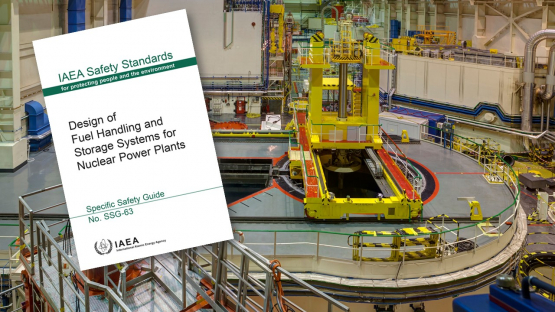Fuel handling and storage at nuclear power plants are important operational activities of a nuclear reactor, such as receipt, storage and inspection of fresh fuel before use; transfer of fresh fuel into the reactor or removal of irradiated fuel from the reactor; and, its storage and handling in the spent fuel pool. The latest IAEA safety publication Safety Standards Series: Design of Fuel Handling and Storage Systems for Nuclear Power Plants (No. SSG-63) addresses these vital functions in detail.
“Nuclear power plant systems providing for safety functions during the fuel handling and storage have their undisputable place within a plant facility and ensuring the highest level of safety is vital,” said Vesselina Ranguelova, Head of the IAEA Safety Assessment Section, adding that “this specific safety guide provides updated recommendations on how to meet the IAEA safety requirements on design of fuel handling and storage systems for nuclear power plants as stated in the IAEA Specific Safety Requirements SSR-2/1 (Rev. 1) document.”
The publication systematically addresses and describes specific aspects to be considered in the design, and provides clear and practical instructions on how to meet relevant IAEA safety requirements, such as for postulated initiating events, design limits, reliability requirements, safety classification, environmental qualifications and strength analysis. The guidelines emphasize the need to strengthen the design for and protection against external hazards and to practically eliminate the conditions leading to significant fuel degradation in spent fuel storage.
The revised and updated recommendations have been additionally enhanced by the lessons learned from the 2011 Fukushima Daiichi nuclear power plant accident, and by knowledge and experience gained from the use of improved technology, and good practices.
Processes on strengthening means for more reliable monitoring and controlling of the water level in the spent fuel storage as well as how to effectively maintain the cooling of spent fuel at an nuclear power plant where an accident has occurred are also covered in the document.






